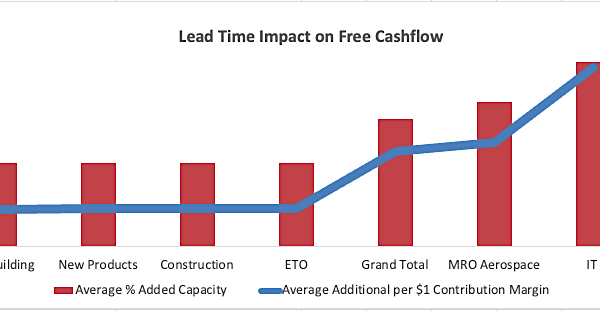If that line makes you bristle, good. It’s supposed to. True leadership does not expect comfort; it expects to serve and carry the weight. Business leadership is no different.
“Managers manage. Leaders lead.” Often, they are mistaken for being the same thing.

The 70 / 15 / 15 Reality in Your Organization
Whether we acknowledge it or not, the corporate population roughly splits into three groups:

- ~70% Complacent / Risk-Averse
Security first. Avoid responsibility. Default posture: “It’s corporate… it’s the system… it’s the rules.” They appear busy but rarely make a significant impact. They continue applying conventional techniques and “doing what we’ve always done, hoping for a different result.” - ~15% Crisis / Desperate
They only move when the business is on the edge: “This is the last resort… if this new initiative doesn’t work, we’re dead.” They will agree to almost anything, but from panic, not principle. - ~15% Visionary / Ambitious
Sensing a significant opportunity, yet frustrated with an inability to execute. They have clarity on the dream, but not the pathway. They’re willing to co-develop a vision and own the process—if you give them a real method and the authority to use it.
Here’s the uncomfortable part:
Your growth will not come from the 70%. It can’t.
The fundamental constraint to business growth—the thing throttling your ability to pursue new markets, new products, new skills, and technologies—is not capital, not technology, not even strategy.
Your fundamental constraint is depth on the managerial bench at all levels.
You don’t lack ideas. You lack enough leaders who can turn those ideas into significant, sustainable value.
Managers Manage. Leaders Carry Consequences. Both good and the bad.
A manager maintains security and stability by keeping the machine running, protecting today’s performance, and avoiding surprises. That’s necessary work—training, guiding, and sustaining current practice.
A leader of significant change does something else entirely:
- They accept responsibility for consequences, not just the possibility of risk. (Certainty is redefined as managing the impact of uncertainty, not eliminating it.)
- They will be held accountable and don’t hide behind “corporate,” “the system,” or “the rules.”
- They are willing to challenge practices, then design and execute a vision.
- Most managers are not wired—or not yet developed—for this level of responsibility.
And that’s the point: Not everyone can lead.
Leadership is not a trophy. It is consent to carry the consequences of decisions that affect every person’s livelihood.
Ambitious Leaders: Where Security and Satisfaction Meet.
The most valuable people in your organization live at the intersection of Security and Satisfaction—they want stability and growth. They are not reckless. They don’t wish to be heroes – they want to plot viable paths.
From the Ambitious Leaders profile:
- They have clarity on the dream but are frustrated by the inability to execute it.
- They sense a significant opportunity but lack clarity of the pathway.
- They’re willing to co-develop a vision, and their need for leadership means they desire to own the processes.
They express things like:
“We know there is much more, but how do we reach it?”
“We must do something new to continue progressing.”
“What’s blocking us from exceeding what the markets expect?”
They’re not asking for another slide deck. They’re asking for a method, a mandate, and a chance to make a difference.
The Job of Senior Leadership: Recruit and Forge the 15%
If your company is serious about Big Ambitious Goals and superior ROI, your priority is not another “initiative.” It builds depth on the bench by transforming ambitious managers into real leaders.
That requires three commitments:
1. Use Improvement Projects as a Leadership Academy
Improvement projects shouldn’t be side quests. They should be the primary vehicle for developing talent:
- Give ambitious managers end-to-end responsibility for meaningful improvement projects.
- Expect them to design, test, and stabilize new ways of working.
- Treat every failure as tuition for experience and method, then codify and transfer that learning to the next generation.
“Process improvement” is not the goal. The depth of leadership capability is the goal.
2. Collaborate on Two Fronts: Systemic and Cultural
Real change demands systemic collaboration (logistical & technical) and cultural collaboration (talent & management).
That means:
- Aligning methods, tools, and metrics with the behavior you want.
- Making it impossible to hide behind the system—ownership and moral engagement must be explicit.
You’re not just “rolling out” a methodology. You’re forging leaders who can apply that methodology under pressure.
3. Don’t Promoting Complacency
Suppose you promote based on tenure, politics, or absence of visible mistakes. In that case, you will fill your leadership ranks with the 70%—complacent, risk-averse people who avoid responsibility and default to the status quo.
Instead, promote based on:
- Demonstrated ownership in improvement projects
- Those willing to admit mistakes and correct them
- Willingness to be accountable for consequences
- Ability to turn ambiguity into an executable path
If someone only steps up in a crisis, they may help you survive—but they will not help you build.
A Recruiting Hook for Real Leaders
If you want a tough recruiting message for your leadership bench, it sounds like this:
Not everyone can lead.
Most people want security without responsibility.
We’re looking for the few who are willing to design and execute a vision, own the consequences, and grow others in the process.
That’s not a slogan. It’s a filter.
- The 70% will self-select out.
- The desperate 15% will be attracted to the drama, but they will fade when it gets tough.
- The ambitious 15% will lean in and ask, “What will it take?”
Those are your people.
Choose Your Side: Manager or Leader
If you’re reading this as a senior executive, here’s the decision:
- You can keep pretending every manager is a potential leader and wonder why your strategies stall.
- Or you can accept that not everyone can lead, and deliberately build depth on the bench by recruiting, testing, and developing the few who can.
If you’re reading this as a manager:
- If this article feels like a personal attack, you’re probably in the 70%.
- If it feels like someone finally described your frustration and ambition, you might be in the 15%.
Either way, the choice is simple:
- Managers manage.
- Leaders lead.
Which one are you becoming—by what you take responsibility for—this year?
Yes, it’s tough out there, be a manager fulfilling a pathway, or a leader creating a pathway. Both options are tough, but you choose.
Find out how to significantly reduce lead time and realiable delivery at exepron.com
Let’s explore if there’s a fit for your organization.
We invite you to test the Exepron. We’ll bring the method, platform, and support. You bring the willingness to differentiate, retool operations, and lead cohesively.



